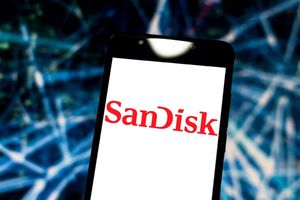Only 20% of ESG funds actually qualify as ‘impact’ investments, new study finds

Sorting ETFs and mutual funds into proper sectors and allocations can be a challenge for investors even when they have plenty of good information to go on. But when it comes to evaluating ESG investments, the challenges are compounded by a lack of uniformity in labeling.
Researchers from the University of Colorado at Boulder and Columbia University in New York have studied U.S. mutual funds that claim to embrace environmental, social and governance principles and found “significant disparities” in how these funds operate, revealing a tangled web of strategies that could leave investors questioning whether their values are truly reflected in their investments.
“ESG labels often mean 100 different things,” Simona Abis, assistant professor of finance at UC Boulder’s Leeds School of Business,said in a story posted online on CU Boulder Today. “Since we don’t agree on what they all mean, misunderstandings can arise, even when funds are not trying to mislead investors.”
The researchers, including Abis, Andrea Buffa, also an assistant professor of finance at Leeds, and Meha Sadasivam, a Ph.D candidate at Columbia, examined a vast pool of mutual funds that invest primarily in U.S. stocks and are actively managed—meaning a fund manager or team picks stocks and makes investment strategy decisions.
They identified funds with ESG-related strategies using a dictionary of ESG terminology. They then read the prospectus for each fund, a document that provides details about a potential investment, manually. In a working paper describing the study, the researchers categorized the funds into three types based on what they found:
- Exclusionary. These funds exclude certain stocks that do not align with their ethical or values-based criteria. Through screening processes, they may eliminate companies with poor labor practices, for example, or those involved in fossil fuels, tobacco and firearms.
- Impact. Funds in this category consider ESG factors, evaluating company stocks not just for their potential returns but for their impact on society and the environment. For example, they might prioritize companies that have strong sustainability practices or positive community engagement. These funds consider ESG factors above and beyond fund returns.
- Opportunistic. While these funds also consider ESG factors, they do so only to improve their assessment of a company’s risk factors and/or its return potential. As a result, these funds may invest in companies with lower ESG ratings if they believe they will deliver higher returns.
The researchers found that only 20% of funds using ESG terminology genuinely qualify as impact funds that prioritize nonfinancial ESG goals, while the majority fall into the other categories.
The ambiguity in terminology used by so-called ESG funds could potentially mislead investors who believe they are supporting funds with a mandate to select holdings aligned with ESG principles, Abis said.

“The challenge lies not just in how funds are labeled, but in the very meanings we attach to those labels,” she added. “Without clear definitions, a fund claiming to focus on ESG might be interpreted in countless ways, leading investors to believe they are supporting impact-oriented initiatives when they might not be.”
ESG investing has experienced a surge in popularity over the past decade, significantly increasing the assets managed by these funds. ESG funds — meaning any funds mentioning ESG terminology in their prospectuses — represented about 4% of the total number of active equity mutual funds in 2015, managing less than 2% of the capital invested in this industry, according to the paper.
After only seven years, ESG funds more than quintupled, representing 22% of active equity mutual funds and managing almost 20% of the invested capital.
However, the portion of capital managed by impact funds—those preferring companies with a better societal and/or environmental impact—has dwindled from 40% of the assets managed by funds mentioning ESG terminology in their prospectuses in 2015 to just 6% in 2022, according to the researchers.
“This contrast highlights a key challenge: When we hear about a surge in ESG investment, we might mistakenly believe that it’s all about saving the planet. In reality, many funds are simply integrating ESG factors for risk management rather than pursuing a dedicated impact agenda,” Abis said.
Read more: Here’s a cutting-edge ESG data platform
More News
View More




Recent Quotes
View More
Quotes delayed at least 20 minutes.
By accessing this page, you agree to the Privacy Policy and Terms Of Service.